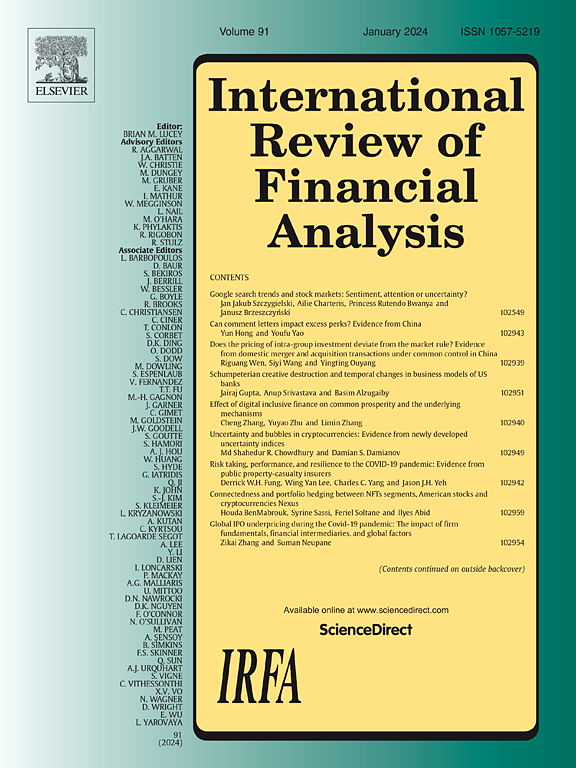Carbon emission reduction development, digital economy, and green transformation of China's manufacturing industry
IF 7.5
1区 经济学
Q1 BUSINESS, FINANCE
引用次数: 0
Abstract
This paper integrates Carbon Emission Reduction Development (CERD), the digital economy, and the green transformation of manufacturing within a unified analytical framework to explore the impact of CERD on the green transformation of manufacturing and examine the role of the digital economy in this process, offering significant theoretical and practical insights for advancing green, high-quality development in the manufacturing sector. Using panel data from 283 Chinese cities between 2014 and 2022, a bidirectional fixed-effects model and a panel threshold model were constructed to investigate the impact of CERD on the green transformation of manufacturing, along with the underlying mechanisms, and to assess the threshold effects of the digital economy development. The findings suggest that CERD significantly promotes the green transformation of manufacturing, a conclusion that remains valid after rigorous robustness tests. Heterogeneity analysis indicates that CERD has a stronger impact in eastern China, non-resource-based cities (non-RBCs), and the National Independent Innovation Demonstration Zones (NIDZs), while its impact on the central and western China, resource-based cities (RBCs), and non-NIDZs is negligible. Mechanism analysis suggests that green technological innovation is the key pathway through which CERD facilitates the green transformation of manufacturing. Threshold effect analysis reveals an inverted U-shaped relationship between CERD's impact and digital economy development, indicating that its effect initially intensifies and then weakens beyond certain levels of digital economic maturity. In the context of promoting green development in the manufacturing industry, our research findings provide valuable references for the formulation and implementation of carbon emission reduction policies in China and other countries that are actively working toward green transformation.
求助全文
约1分钟内获得全文
求助全文
来源期刊

International Review of Financial Analysis
BUSINESS, FINANCE-
CiteScore
10.30
自引率
9.80%
发文量
366
期刊介绍:
The International Review of Financial Analysis (IRFA) is an impartial refereed journal designed to serve as a platform for high-quality financial research. It welcomes a diverse range of financial research topics and maintains an unbiased selection process. While not limited to U.S.-centric subjects, IRFA, as its title suggests, is open to valuable research contributions from around the world.
 求助内容:
求助内容: 应助结果提醒方式:
应助结果提醒方式:


